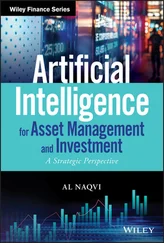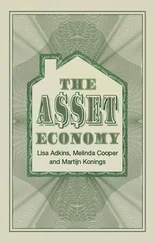To account for the impact of liquidity, investors should attach a shadow asset to the liquid asset classes in a portfolio that enable them to use liquidity to increase a portfolio's expected utility, and they should attach a shadow liability to illiquid asset classes in a portfolio that prevent them from preserving a portfolio's expected utility.
These shadow allocations allow investors to address illiquidity within a single unified framework of expected return and risk.
Chapter 18: Currency Risk
Investors may improve portfolio efficiency by optimally hedging a portfolio's currency exposure.
Linear hedging strategies use forward or futures contracts to offset cur- rency exposure. They hedge both upside returns and downside returns. They are called linear hedging strategies because the portfolio's returns are a linear function of the hedged currencies' returns.
Investors can reduce risk more effectively by allowing currency-specific hedging, cross-hedging, and overhedging. These strategies retain exposure to currencies that diversify the portfolio and reduce exposure to currencies that do not.
Nonlinear hedging strategies use put options to protect a portfolio from downside returns arising from currency exposure while allowing it to benefit from upside currency returns. They are called nonlinear hedging strategies because the portfolio's returns are a nonlinear function of the hedged currencies' returns.
Nonlinear hedging strategies are more expensive than linear hedging strategies because they preserve the upside potential of currencies.
A basket option is an option on a portfolio of currencies and therefore provides protection against a collective decline in currencies.
A portfolio of options offers protection against a decline in any of a portfolio's currencies.
A basket option is less expensive than a portfolio of options because it offers less protection.
Chapter 19: Estimation Error
When investors estimate asset class covariances from historical returns, they face three types of estimation error: small-sample error, independent-sample error, and interval error.
Small-sample error arises because the investor's investment horizon is typically shorter than the historical sample from which covariances are estimated.
Independent-sample error arises because the investor's investment horizon is independent of history.
Interval error arises because investors estimate covariances from higher-frequency returns than the return frequency they care about. If returns have nonzero autocorrelations, the standard deviation does not scale with the square root of time. If returns have nonzero autocorrelations or nonzero lagged cross-correlations, correlation is not invariant to the return interval used to measure it.
Common approaches to controlling estimation error, such as Bayesian shrinkage and resampling, make portfolios less sensitive to estimation error.
A new approach, called stability-adjusted optimization, assumes that some covariances are reliably more stable than other covariances. It delivers portfolios that rely more on relatively stable covariances and less on relatively unstable covariances.
Chapter 20: Leverage Versus Concentration
Theory shows that it is more efficient to raise a portfolio's expected return by employing leverage rather than concentrating the portfolio in higher-expected-return asset classes.
The assumptions that support this theoretical result do not always hold in practice.
If we collectively allow for asymmetric preferences, nonelliptical returns, and realistic borrowing costs, it may be more efficient to raise expected return by concentrating a portfolio in higher-expected-return asset classes than by using leverage.
However, if we also assume that an investor has even a modest amount of skill in predicting asset class returns, then leverage is better than con- centration even in the presence of asymmetric preferences, nonelliptical distributions, and realistic borrowing costs.
Investors typically rebalance a portfolio whose weights have drifted away from its optimal targets based on the passage of time or distance from the optimal targets.
Investors should approach rebalancing more rigorously by recognizing that the decision to rebalance or not affects the choices the investor will face in the future.
Dynamic programming can be used to determine an optimal rebalancing schedule that explicitly balances the cost of transacting with the cost of holding a suboptimal portfolio.
Unfortunately, dynamic programming can only be applied to portfolios with a few asset classes because it suffers from the curse of dimensionality.
For portfolios with more than just a few asset classes, investors should use a quadratic heuristic developed by Harry Markowitz and Erik van Dijk, which easily accommodates several hundred assets.
Chapter 22: Regime Shifts
Rather than characterizing returns as coming from a single, stable regime, it might be more realistic to assume they are generated by disparate regimes such as a calm regime and a turbulent regime.
Investors may wish to build portfolios that are more resilient to turbulent regimes by employing stability-adjusted optimization, which relies more on relatively stable covariances than on unstable covariances, or by blending the covariances from calm and turbulent subsamples in a way that places greater emphasis on covariances that prevailed during turbulent regimes.
These approaches produce static portfolios, which still display unstable risk profiles.
Investors may instead prefer to manage a portfolio's asset mix dynam- ically, by switching to defensive asset classes during turbulent periods and to aggressive asset classes during calm periods.
It has been shown that hidden Markov models are effective at distin-guishing between calm and turbulent regimes by accounting for the level, volatility, and persistence of the regime characteristics.
Chapter 23: Scenario Analysis
Scenario analysis requires investors to define prospective economic scenarios, assign probabilities to them, translate the scenarios into expected asset class returns, and identify the most suitable portfolio given all these inputs.
The greatest challenge to scenario analysis is determining each scenario's probability.
We can estimate a scenario's probability by measuring its statistical similarity to current economic conditions or normal economic conditions using a statistic called the Mahalanobis distance.
This framework also allows us to identify the smallest changes in the scenario descriptions that would be required to equate the empirical probabilities with our subjective views.
We can further enhance scenario analysis by describing scenarios as paths rather than as single-period average outcomes.
Chapter 24: Stress Testing
Investors typically evaluate exposure to loss based on a portfolio's full- sample distribution of returns at the end of their investment horizon.
However, investors care about what happens throughout their investment horizon and not just at its conclusion.
They also recognize that losses are more common when markets are turbulent than when they are calm.
First passage time probabilities enable investors to estimate probability of loss and value at risk throughout their investment horizon.
The Mahalanobis distance allows investors to distinguish between calm and turbulent markets.
Investors can assess risk more realistically by applying first passage time probabilities to the returns that prevailed during turbulent subsamples.
CHAPTER 1 What Is an Asset Class?
Читать дальше












